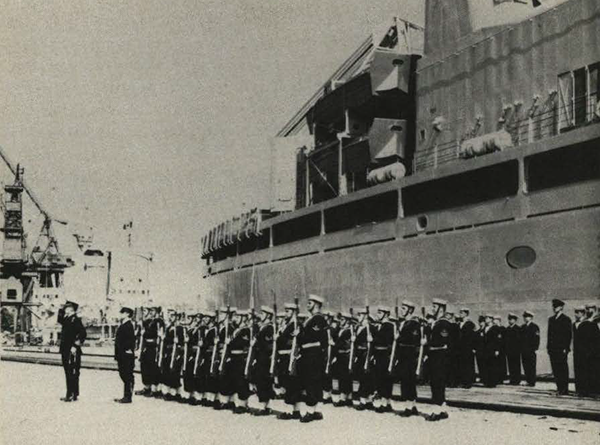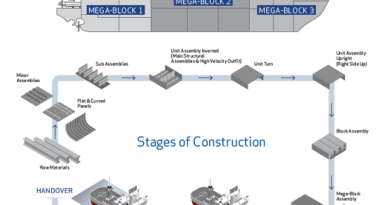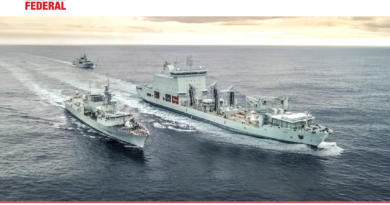Commissioning Canadian Navy Ships
Commissioning is the placing of a ship into active service with the Navy (well put in French as prendre en service or metre en service). Referring back to the King’s Regulations Canadian Navy article 1.02(x), “‘commissioned ship’ means a ship placed in His Majesty’s Canadian Naval Service in accordance with a commissioning order issued by the Minister.” Another way to refer to a ship is as ‘in commission.’ It is not the size or armament of a ship that determines whether the ship is to be commissioned into a country’s service, but whether there is a need for the authorities and privileges inherent with the ship being commissioned. Usually the status of being in commission entails the ship being commanded by a naval officer, crewed by people (properly known as a ship’s company) under naval discipline, and displaying appropriate signs (naval ensign, masthead pennant and the like). When a ship is in commission, national identifiers precede the name – for Canada, that is Her Majesty’s Canadian Ship, abbreviated to HMCS.
A commissioning is marked with a traditional and major public ceremony. As periods of commissions equate to the duration of each commanding officer, a ship may go through multiple commissions throughout its existence, though it is not commonly perceived that way. Usually only for the first commission and after a major refit when the ship spent an extended time in a builder’s yard is a ceremony conducted. Changes of command are marked by their own ceremonies. For a ceremony, the ship’s company is paraded on the wharf where the ship is berthed; speeches are made by dignitaries, the shipbuilder and naval authorities; and religious observances are held. Then the commanding officer orders the traditional ‘Man ship!,’ the ship’s company marches aboard, flags are broken (flown), equipment operated and the captain is piped aboard.
In the past and particularly during wartime, a ship’s naming (also known as christening), launching and commissioning could occur at the same time and with one ceremony. With modern building practices and the need to carry out extensive trials, there can be many months between the occasions. A modern warship is legally in commission from the time the builder delivers and the Navy accepts her – a commissioning ceremony is a formality.
In Canada and many navies such as the Royal Navy, it is not actually the ship which is commissioned but the commanding officer as it is the officer who receives the commission (i.e., order). However, the common expression is ‘commissioned ship.’ In some other navies, it is the ship that is considered to be commissioned, and there may be different types of commissions. For example, the US Navy recognizes ‘In Commission, Special’ and ‘In Commission, Full’ in addition to ‘Out of Commission in Reserve.” Canada has used the term ‘In Reserve’ in past decades for ships not in active service; an older and obsolete term for that status is “In Ordinary’ (meaning a ship was laid up and funded by what was known as an ordinary budget).
For more details, see: “Launching and Commissioning of HMC Ships” (https://www.canada.ca/en/services/defence/caf/military-identity-system/customs-traditions-manual/launching-hmcs.html).
A PDF of this Note is available here.




